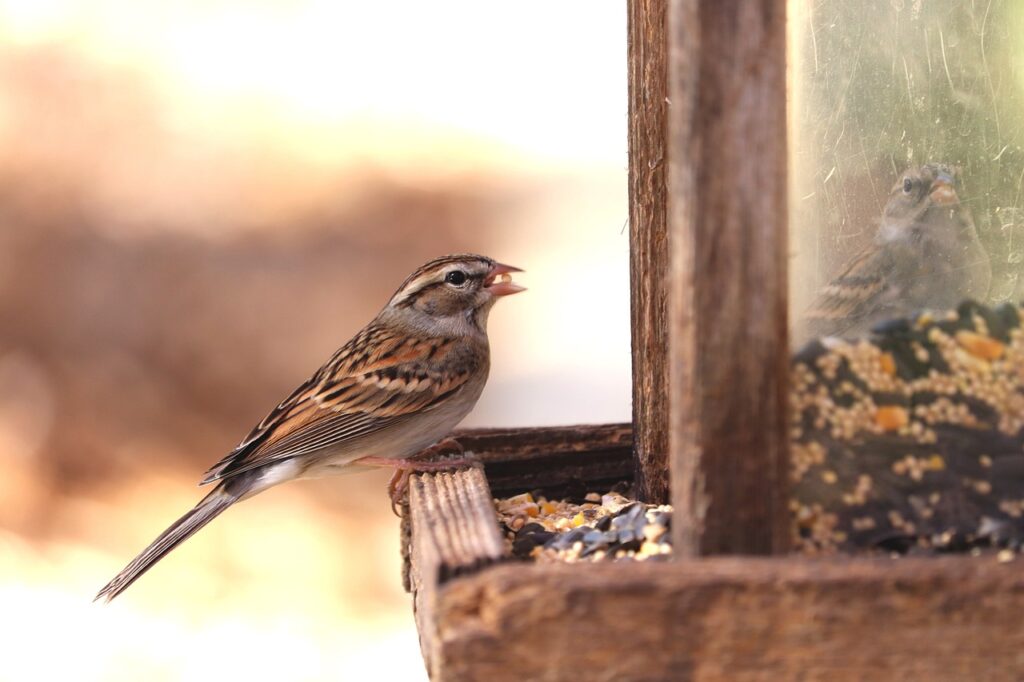
Bird Feeders and How to Prevent Rodent Problems
1. Introduction: The Joy of Bird Feeding
Prevent rodent problems from bird feeders in your garden, creating a haven for wildlife. However, without proper precautions, bird feeders can unintentionally invite rodents like rats and mice. These uninvited guests can cause infestations, damage property, and spread diseases.
Thankfully, you can enjoy birdwatching without pest problems by taking simple, effective steps to manage your feeding setup.
2. Why Bird Feeders Attract Rodents
Understanding why rodents are drawn to bird feeders is the first step in preventing issues.
Common Reasons Include:
- Accessible Food: Spilt seeds provide an easy meal for rodents scavenging in your garden.
- Poor Feeder Design: Open or easily reachable feeders allow rodents to feed directly.
- Nearby Shelter: Dense shrubs, woodpiles, or cluttered spaces near the feeder give rodents safe places to nest.
Recognising these factors helps you address the root cause of the problem.
3. Choosing the Right Bird Feeder for Pest Control
The type of bird feeder you use can make a huge difference. Modern designs cater to bird lovers who also want to keep pests away.
Best Options Include:
- Weight-Activated Feeders: These feeders shut off access when heavier animals land on them.
- Metal Seed Cages: Surrounding the feeder with a cage ensures only small birds can reach the food.
- Tube Feeders: Tall, narrow feeders limit access for larger pests like rodents.
Opt for sturdy feeders made from metal or tough plastic to prevent chewing.
4. Strategic Placement of Bird Feeders
Where you place your feeder plays a crucial role in keeping rodents at bay.
Placement Tips:
- Hang Feeders High: Suspend feeders at least six feet above the ground and away from walls, fences, or tree branches.
- Add Pole Baffles: Metal or plastic baffles on feeder poles stop rodents from climbing.
- Avoid Dense Vegetation: Keep feeders clear of overgrown areas or clutter that could shelter pests.
Thoughtful positioning prevents rodents from accessing your feeder easily.
5. Reducing Spilt Seed: Practical Tips
Spilt seed is a magnet for rodents. Fortunately, you can minimise this issue with a few clever adjustments.
Simple Strategies:
- No-Mess Seed Mixes: Choose blends with shelled sunflower seeds, suet, or mealworms to reduce waste.
- Install Seed Trays: Attach a catch tray beneath the feeder to collect falling seeds.
- Portion Control: Only put out as much food as birds can eat in a day.
By managing spilt seed, you eliminate a primary attraction for rodents.
6. Cleaning and Maintenance for a Rodent-Free Zone
Keeping the feeding area clean is essential to prevent rodent infestations.
Best Practices:
- Daily Sweeping: Clear away any spilt seeds or debris regularly.
- Trim Nearby Vegetation: Remove bushes or grass around the feeder to eliminate hiding spots.
- Secure Food Storage: Store birdseed in metal or heavy-duty plastic containers with tight lids.
A clean environment ensures your feeder remains a safe space for birds, not rodents.
7. Deterrents to Keep Rodents Away
If you notice persistent rodent activity, adding deterrents can strengthen your efforts.
Additional Solutions:
- Natural Repellents: Place peppermint oil-soaked cotton balls near feeders to repel rodents.
- Motion-Activated Sprinklers: Install sprinklers that activate when motion is detected, scaring away intruders.
These methods add an extra layer of defence to your rodent-prevention plan.
8. Conclusion: Feeding Birds Responsibly
Bird feeding doesn’t have to come at the cost of rodent infestations. By selecting rodent-resistant feeders, positioning them strategically, minimising seed spillage, and maintaining a clean feeding area, you can enjoy birdwatching while keeping pests at bay.
If you need more advice or professional pest control solutions, visit our blog at Shire Pest Solutions.
